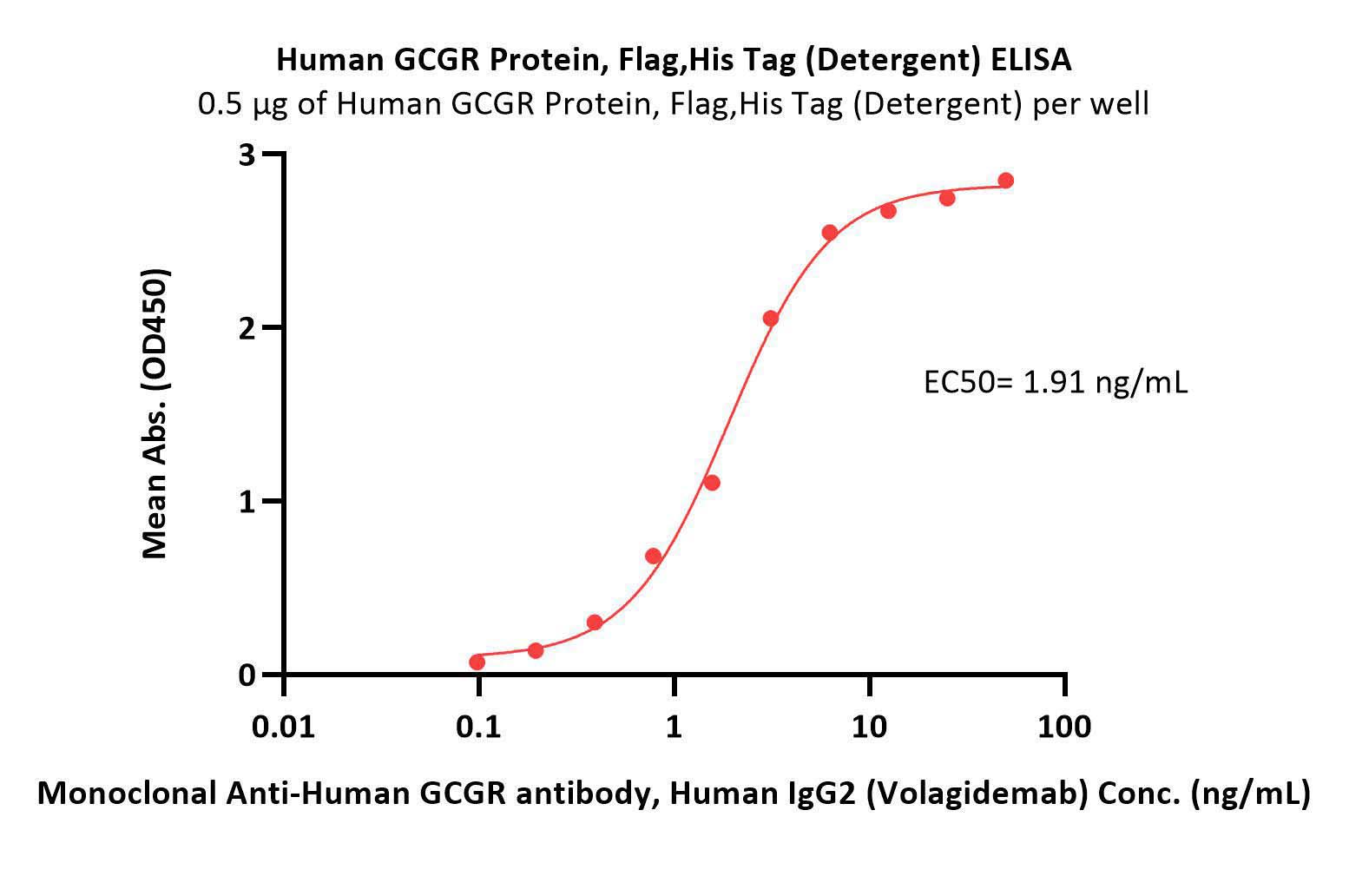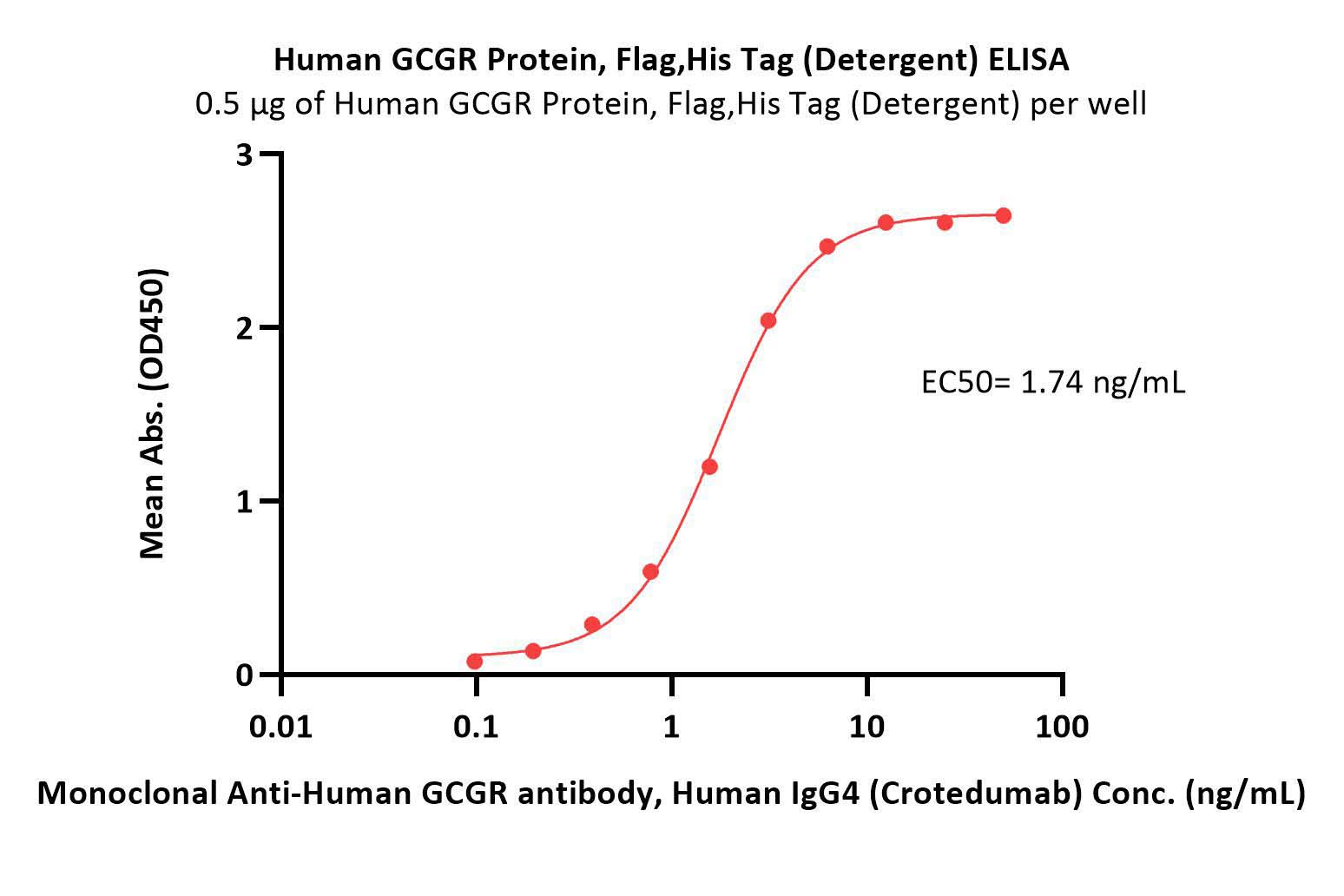分子别名(Synonym)
Glucagon R, GCGR,Glucagon receptor
表达区间及表达系统(Source)
Human GCGR Protein, Flag,His Tag (GCR-H52D3) is expressed from human 293 cells (HEK293). It contains AA Ala 26 - Ala 256 & Glu 260 - Asn 432 (Accession # P47871-1).
Predicted N-terminus: Asp
Request for sequence
蛋白结构(Molecular Characterization)
This protein carries flag tag at the N-terminus and polyhistidine tag at the C-terminus.
The protein has a calculated MW of 83.2 kDa.
内毒素(Endotoxin)
Less than 1.0 EU per μg by the LAL method.
制剂(Formulation)
This product is not suitable for cell based experiments due to cytotoxicity of DDM.
DDM and CHS are INDISPENSABLE to keep membrane protein soluble and active, under no circumastance should you remove DDM and CHS.
DDM/CHS buffer (DC-11) is sold separately and not included in protein, and please contact us if you need the buffer.
If glycerol is not compatible to your application, remove glycerol just before immediate experiment, and NEVER store glycerol-free protein solution.
Supplied as 0.2 μm filtered solution in 50 mM HEPES, 150 mM NaCl, DDM, CHS, pH7.5 with glycerol as protectant.
Contact us for customized product form or formulation.
运输(Shipping)
This product is supplied and shipped with dry ice, please inquire the shipping cost.
存储(Storage)
Please avoid repeated freeze-thaw cycles.
This product is stable after storage at:
- The product MUST be stored at -70°C or lower upon receipt;
- -70°C for 3 months under sterile conditions.
活性(Bioactivity)-ELISA

Immobilized Human GCGR Protein, Flag,His Tag (Cat. No. GCR-H52D3) at 5 μg/mL (100 μL/well) on a Nickel Coated plate can bind Monoclonal Anti-Human GCGR antibody, Human IgG2 (Volagidemab) (Cat. No. GCR-H52D3) with a linear range of 0.1-3 ng/mL (QC tested).
Protocol

Immobilized Human GCGR Protein, Flag,His Tag (Cat. No. GCR-H52D3) at 5 μg/mL (100 μL/well) on a Nickel Coated plate can bind Monoclonal Anti-Human GCGR antibody, Human IgG4 (Crotedumab) with a linear range of 0.1-3 ng/mL (Routinely tested).
Protocol
背景(Background)
The protein encoded by this gene is a glucagon receptor that is important in controlling blood glucose levels. Defects in this gene are a cause of type 2 diabetes mellitus (T2DM) . The ever increasing prevalence of type 2 diabetes mellitus in the developed and developing nations calls for the introduction of new and more effective treatments. Glucagon receptor (GCGR) antagonists are highly validated in preclinical models of T2DM and thus have the potential to be developed as a new therapy.























































 膜杰作
膜杰作 Star Staining
Star Staining











